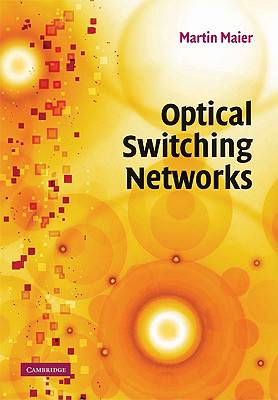
- Afhalen na 1 uur in een winkel met voorraad
- Gratis thuislevering in België vanaf € 30
- Ruim aanbod met 7 miljoen producten
- Afhalen na 1 uur in een winkel met voorraad
- Gratis thuislevering in België vanaf € 30
- Ruim aanbod met 7 miljoen producten
Zoeken
Omschrijving
Optical Switching Networks describes all the major switching paradigms developed for modern optical networks, discussing their operation, advantages, disadvantages and implementation. Following a review of the evolution of optical WDM networks, an overview of the future trends out. The latest developments in optical access, local, metropolitan, and wide area networks are covered, including detailed technical descriptions of generalized multiprotocol label switching, waveband switching, photonic slot routing, optical flow, burst and packet switching. The convergence of optical and wireless access networks is also discussed, as are the IEEE 802.17 Resilient Packet Ring and IEEE 802.3ah Ethernet passive optical network standards and their WDM upgraded derivatives. The feasibility, challenges and potential of next-generation optical networks are described in a survey of state-of-the-art optical networking testbeds. Animations showing how the key optical switching techniques work are available via the web, as are lecture slides (www.cambridge.org/9780521868006).
Specificaties
Betrokkenen
- Auteur(s):
- Uitgeverij:
Inhoud
- Aantal bladzijden:
- 244
- Taal:
- Engels
Eigenschappen
- Productcode (EAN):
- 9780521868006
- Verschijningsdatum:
- 11/02/2008
- Uitvoering:
- Hardcover
- Formaat:
- Ongenaaid / garenloos gebonden
- Afmetingen:
- 178 mm x 254 mm
- Gewicht:
- 757 g

Alleen bij Standaard Boekhandel
+ 271 punten op je klantenkaart van Standaard Boekhandel
Beoordelingen
We publiceren alleen reviews die voldoen aan de voorwaarden voor reviews. Bekijk onze voorwaarden voor reviews.








